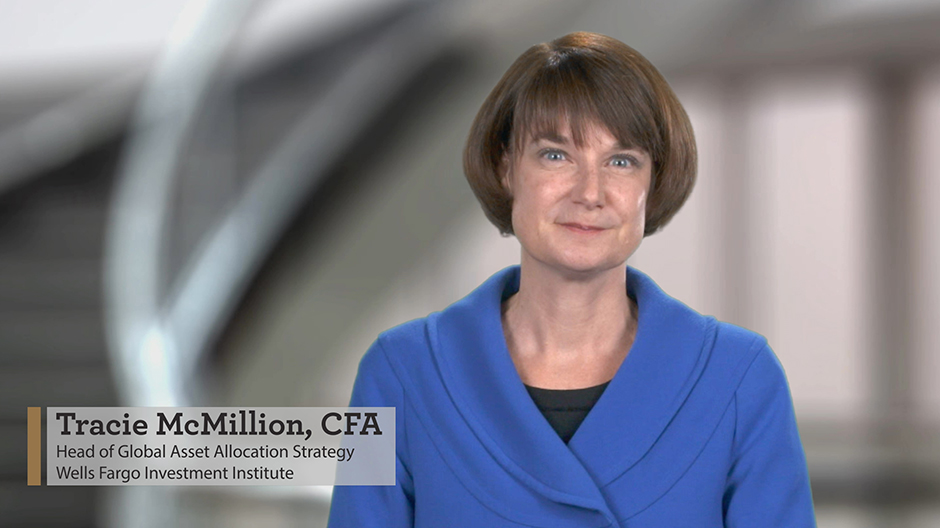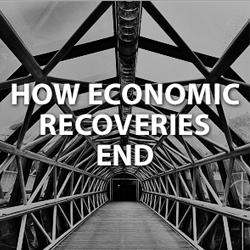Video Transcript
2019 Outlook: The End of Easy
Can this long recovery and the bull market continue through 2019?
June 2019 completes 10 years of economic growth. For most of this expansion, the pace of growth has been slow, but low inflation contained costs and propped up profit margins.
As long as earnings continue to grow and inflation stays benign—as we expect—then equity market valuations can remain firm and, in our opinion, equity markets should make new highs in 2019.
So, even though we may see more periods of market volatility, our work suggests we are still a long way from recession.
Without a recession in our sights, we think U.S. equities should continue to perform well. And while the economy and earnings are still growing, we view market swings not as the end of the cycle or the bull market, but potentially as good opportunities to deploy cash—even incrementally.
Globally, we believe developed and emerging equity markets could see headwinds start to fade, which could result in positive returns in 2019.
What are the opportunities and risks with rising interest rates?
The long cycle should put more upward pressure on bond yields, and create more volatility in credit markets. And so we prefer moving up in credit quality.
What’s more, rising long-term yields make us favor shorter-term fixed-income investments.
And we still see opportunities in municipal credit markets—thanks to limited supply, increased investor demand in high-tax states, and greater financial flexibility among municipal issuers.
We believe most investors should hold some fixed income in their portfolios for its generally more-stable returns and ability to generate income. Higher interest rates are normally good for savers, but they can put stress on weaker borrowers and may lead to some credit downgrades, and possibly defaults in the bond market. We suggest holding higher quality and shorter duration fixed income assets in investment portfolios.
How should investors prepare for an increase in market volatility?
In the last decade, it was easy to watch equities and bonds rise together, with low volatility, and to see the U.S. outperform international markets. But now the end of that time may have arrived—it’s the “end of easy.” That doesn’t mean the cycle is over but, from now on, investors may have to do more homework: To build a truly global portfolio, to rotate among sectors, and to keep bonds in the portfolio. Investors should prepare their portfolios for continued volatility in 2019. A well-diversified, global portfolio that includes all four asset groups—equities, fixed income, real assets, and alternative investments—can help to smooth market volatility. Investors can take advantage of volatile markets by rebalancing into assets that have declined in price and may present attractive values. For more information on how your portfolio will be affected by economic trends in the coming year, download our Wells Fargo Investment Institute report—2019 Outlook: The End of Easy.
Risk Considerations
All investing involves risk including the possible loss of principal.
Asset Class Risks Each asset class has its own risk and reward characteristics which should be evaluated carefully before making any investment decisions. The level of risk associated with a particular investment or asset class generally correlates with the level of return the investment or asset class might achieve. Both stocks and bonds involve risk and their returns and risk levels can vary depending on prevailing market and economic conditions. Bonds are subject to market, interest rate, credit/default, liquidity, inflation and other risks. Prices tend to be inversely affected by changes in interest rates. Foreign investing involves greater risk than those associated with investing domestically including political, economic, currency and the risks associated with different account standards. These risks are heightened in emerging markets. Real assets are subject to the risks associated with real estate, commodities and other investments and may not be suitable for all investors. Alternative investments trade in diverse complex strategies which may expose investors to considerable risks. Be sure you are aware of, and understand all risks associated with a particular investment before investing.
Investment and Insurance Products: * NOT FDIC Insured * NO Bank Guarantee * MAY Lose Value
General Disclosures
The opinions expressed reflect the judgment of the speaker as of the recording date and are subject to change without notice. The material has been prepared or is distributed solely for information purposes and is not a solicitation or an offer to buy any security or instrument or to participate in any trading strategy. Past performance is no guarantee of future results. Additional information is available upon request.
Wells Fargo Investment Institute, Inc. is a registered investment adviser and wholly owned subsidiary of Wells Fargo Bank, N.A., a bank affiliate of Wells Fargo & Company.
The information contained herein constitutes general information and is not directed to, designed for, or individually tailored to, any particular investor or potential investor. This report is not intended to be a client‐specific suitability analysis or recommendation, an offer to participate in any investment, or a recommendation to buy, hold or sell securities. Do not use this report as the sole basis for investment decisions. Do not select an asset class or investment product based on performance alone. Consider all relevant information, including your existing portfolio, investment objectives, risk tolerance, liquidity needs and investment time horizon.
Wells Fargo Advisors is registered with the U.S. Securities and Exchange Commission and the Financial Industry Regulatory Authority, but is not licensed or registered with any financial services regulatory authority outside of the U.S. Non-U.S. residents who maintain U.S.-based financial services account(s) with Wells Fargo Advisors may not be afforded certain protections conferred by legislation and regulations in their country of residence in respect of any investments, investment transactions or communications made with Wells Fargo Advisors.
Wells Fargo Advisors is a trade name used by Wells Fargo Clearing Services, LLC and Wells Fargo Advisors Financial Network, LLC, Members SIPC, separate registered broker-dealers and non-bank affiliates of Wells Fargo & Company.
© 2018 Wells Fargo Investment Institute. All rights reserved. CAR-1118-00309
![]()




